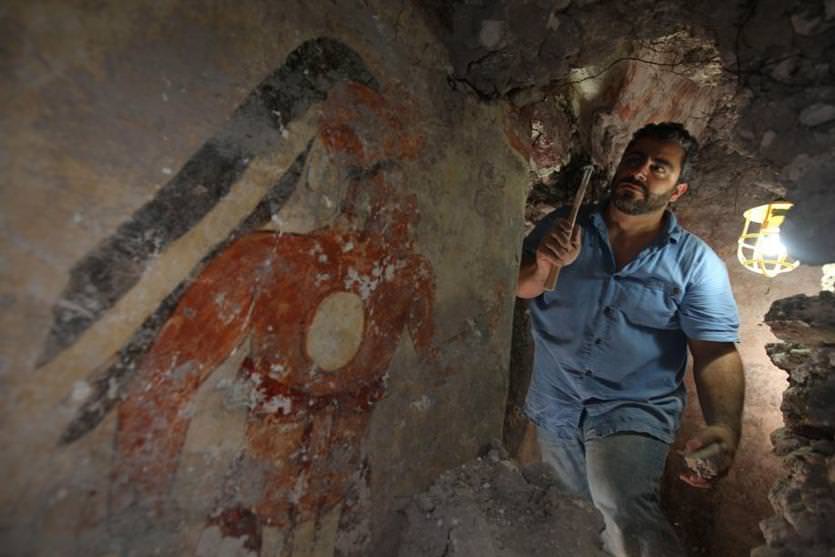[/caption]
So much for the world ending on December 21, 2012. We’ve been saying it for years, but a new find by archaeologists confirms the Mayan calendar indeed does not end this year but keeps going, just like turning a page to a new calendar.
“It’s very clear that the 2012 date, while important as Baktun 13, was turning the page,” David Stuart, quoted by Alan Boyle on MSNBC’s Cosmic Log. “Baktun 14 was going to be coming, and Baktun 15 and Baktun 16. … The Maya calendar is going to keep going, and keep going for billions, trillions, octillions of years into the future.”
A team of archaeologists found a small room in Mayan ruins where royal scribes wrote on the walls — apparently like a blackboard — to keep track of astronomical records and details of the complex Mayan calendar. The writings date to about 1,200 years ago.
These are the oldest known astronomical tables from the Maya. They were found at the Xultun archaeological site in Guatemala’s Peten region. Scientists already knew the Mayans must have been keeping such records during that time period, but until now the oldest known examples dated from about 600 years later.
The room, about 2 meters (6-feet) square, contains walls decorated with images of a king and some other notable figures, as well as astronomical numbers and writings, the scientists said. The room had a stone roof rather than a thatched one, which may indicate the importance of the room.
Why did they write on walls, as opposed to other Mayan texts that have been found on bark paper?
The time period of the early 9th century was not a stable time for the Mayans, as there was political turmoil between the various city-states of the time, and the researchers said that perhaps the Xultun scribes wished to make a more permanent record of their data related to the calendar.
By some supposed “researchers,” Dec. 21, 2012 has been correlated to the end of the Mayan Long Count calendar, which was based on a cycle of 13 intervals known as baktuns, each lasting 144,000 days.
But the newly found writing on walls of the ancient room shows wide ranges of accumulated time, including a 17-baktun period. “There was a lot more to the Maya calendar than just 13 baktuns,” said Stuart, talking with reporters. Seventeen baktuns would stand for about 6,700 years, which is much longer than the 13-baktun cycle of 5,125 years. However, Stuart cautioned that the time notation shouldn’t be read as specifying a date that’s farther in the future than Dec. 21.
“It may just be that this is a mathematical number that’s kind of interesting,” he said. “We’re not sure what the base of the calendar is.”
William Saturno, an archaeologist at Boston University who led the team of archaeologists said many different scientists have been trying to get the word out that the end of the Maya culture’s 13-baktun Long Count calendar doesn’t signify the end of the world, but merely a turnover to the next cycle in a potentially infinite series — like going from Dec. 31 to Jan. 1 on a modern calendar.
“If someone is a hard-core believer that the world is going to end in 2012, no painting is going to convince them otherwise,” he said. “The only thing that can convince them otherwise is waiting until Dec. 22, 2012 — which fortunately for all of us isn’t that far away.”
Read more at Cosmic Log, ABC News, Science, National Geographic.

